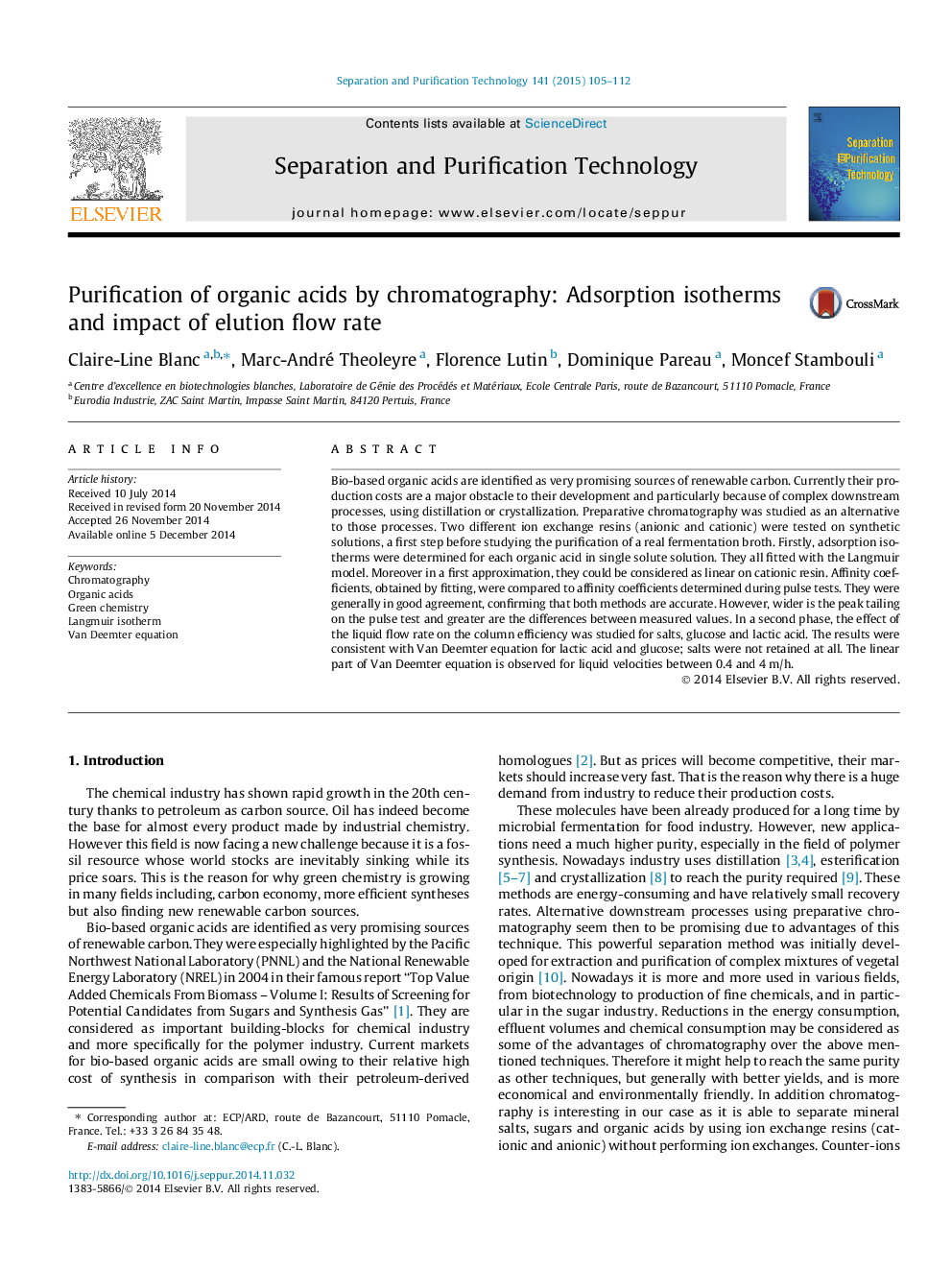| Article ID | Journal | Published Year | Pages | File Type |
|---|---|---|---|---|
| 640662 | Separation and Purification Technology | 2015 | 8 Pages |
Abstract
Bio-based organic acids are identified as very promising sources of renewable carbon. Currently their production costs are a major obstacle to their development and particularly because of complex downstream processes, using distillation or crystallization. Preparative chromatography was studied as an alternative to those processes. Two different ion exchange resins (anionic and cationic) were tested on synthetic solutions, a first step before studying the purification of a real fermentation broth. Firstly, adsorption isotherms were determined for each organic acid in single solute solution. They all fitted with the Langmuir model. Moreover in a first approximation, they could be considered as linear on cationic resin. Affinity coefficients, obtained by fitting, were compared to affinity coefficients determined during pulse tests. They were generally in good agreement, confirming that both methods are accurate. However, wider is the peak tailing on the pulse test and greater are the differences between measured values. In a second phase, the effect of the liquid flow rate on the column efficiency was studied for salts, glucose and lactic acid. The results were consistent with Van Deemter equation for lactic acid and glucose; salts were not retained at all. The linear part of Van Deemter equation is observed for liquid velocities between 0.4 and 4Â m/h.
Related Topics
Physical Sciences and Engineering
Chemical Engineering
Filtration and Separation
Authors
Claire-Line Blanc, Marc-André Theoleyre, Florence Lutin, Dominique Pareau, Moncef Stambouli,
